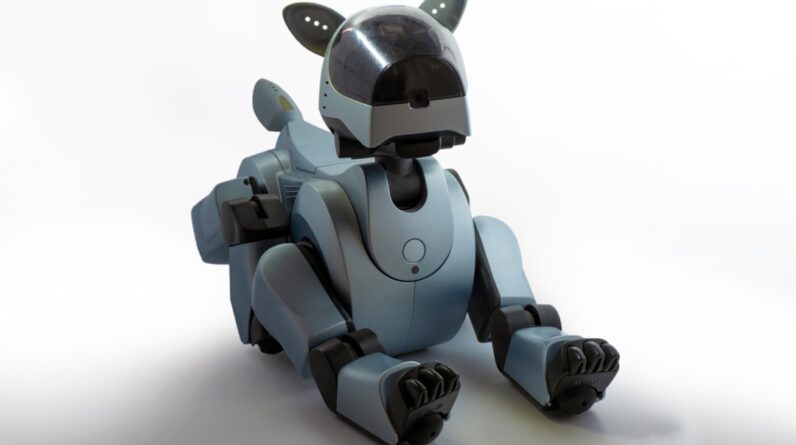The concept of the uncanny valley is a fascinating phenomenon that arises when human-like robots or artificial entities evoke feelings of unease or discomfort in observers. You may have experienced this sensation when encountering a lifelike android or a digital character that looks almost human but falls short in some subtle way. This dissonance can create a sense of eeriness, as the closer the representation gets to being human, the more pronounced the imperfections become.
The term was first coined by Japanese roboticist Masahiro Mori in 1970, who posited that as robots become more human-like, they elicit increasingly positive emotional responses—until they reach a point where they become unsettling. This dip in emotional response is what he termed the “valley.” Understanding the uncanny valley is crucial for anyone involved in the design and development of AI and robotics. As you delve deeper into this concept, you may find that it is not merely a technical issue but also a psychological one.
The uncanny valley serves as a reminder of our innate ability to detect subtle cues that differentiate humans from machines. These cues can include facial expressions, body language, and even the quality of voice. When these elements are not perfectly aligned with human expectations, it can lead to feelings of discomfort or even revulsion.
This understanding is essential for developers and designers who aim to create more engaging and relatable AI systems.
Key Takeaways
- The Uncanny Valley refers to the discomfort people feel when interacting with human-like robots or AI that are almost, but not quite, human.
- AI plays a crucial role in human-machine interaction, from virtual assistants to autonomous vehicles, and has the potential to enhance user experience.
- Psychological factors such as familiarity, cultural differences, and individual preferences can significantly impact human-machine interaction.
- The Uncanny Valley can negatively impact user experience, leading to distrust, discomfort, and avoidance of AI and robotic technologies.
- Overcoming the Uncanny Valley in AI requires careful design, user testing, and continuous improvement to create more human-like and relatable AI experiences.
The Role of AI in Human-machine Interaction
Artificial intelligence plays a pivotal role in shaping the landscape of human-machine interaction. As you engage with various technologies, from virtual assistants to advanced robotics, you may notice how AI enhances these interactions by making them more intuitive and responsive. AI algorithms analyze user behavior, preferences, and emotions to tailor experiences that feel more personalized and engaging.
This capability allows machines to adapt to your needs, creating a seamless interaction that feels almost natural. Moreover, AI’s role extends beyond mere functionality; it also encompasses emotional intelligence. As you interact with AI systems, you may find that they can recognize your mood through voice tone or facial expressions, allowing them to respond appropriately.
This emotional responsiveness can significantly enhance user experience, making you feel understood and valued. However, this also raises questions about the limits of AI’s emotional capabilities and how closely it can mimic genuine human interaction without crossing into the uncanny valley.
Psychological Factors in Human-machine Interaction
The psychological factors at play in human-machine interaction are complex and multifaceted. As you engage with technology, your emotional responses are influenced by various elements, including familiarity, trust, and empathy. For instance, when you interact with a machine that exhibits human-like traits, your brain may instinctively try to establish a connection based on past experiences with real humans.
This desire for connection can lead to feelings of comfort or discomfort, depending on how well the machine meets your expectations. Additionally, cognitive biases come into play during these interactions. You might find yourself attributing human-like qualities to machines, a phenomenon known as anthropomorphism.
This tendency can enhance your engagement with technology but can also lead to disappointment when the machine fails to meet your emotional needs. Understanding these psychological factors is essential for developers aiming to create AI systems that resonate positively with users while avoiding the pitfalls of the uncanny valley.
Impact of Uncanny Valley on User Experience
The impact of the uncanny valley on user experience cannot be overstated. When you encounter a robot or AI that falls into this unsettling category, it can significantly affect your willingness to engage with it. You may feel hesitant or even repulsed by an entity that looks almost human but lacks the subtle nuances that make real human interaction comforting and relatable.
This discomfort can lead to a breakdown in communication and trust, ultimately hindering the effectiveness of the technology. Moreover, the uncanny valley can influence your perception of the technology’s capabilities. If you find an AI unsettling, you may question its reliability or usefulness, regardless of its actual performance.
This skepticism can create barriers to adoption and limit the potential benefits that advanced technologies can offer. Therefore, addressing the uncanny valley is not just about aesthetics; it is about ensuring that users like you feel comfortable and confident in their interactions with AI systems.
Overcoming the Uncanny Valley in AI
To overcome the challenges posed by the uncanny valley, developers must focus on creating designs that prioritize authenticity and relatability. You may have noticed that some successful AI systems adopt a more stylized or abstract appearance rather than striving for hyper-realism. By embracing a design philosophy that emphasizes clarity and simplicity, developers can create machines that resonate positively with users while avoiding the discomfort associated with near-human representations.
Another approach involves enhancing the emotional intelligence of AI systems. By equipping machines with advanced algorithms that allow them to understand and respond to human emotions more effectively, developers can create interactions that feel more genuine and less mechanical. As you engage with these emotionally intelligent systems, you may find yourself more willing to embrace their presence and capabilities, thus bridging the gap created by the uncanny valley.
Ethical Considerations in Human-machine Interaction
As you navigate the evolving landscape of human-machine interaction, ethical considerations become increasingly important. The development of AI technologies raises questions about privacy, consent, and accountability. For instance, when interacting with an AI system that mimics human behavior, you may wonder about the implications of sharing personal information or emotions with a machine.
Developers must prioritize transparency and ethical guidelines to ensure that users like you feel safe and respected during these interactions. Furthermore, there is a growing concern about the potential for manipulation in human-machine interactions. As AI systems become more adept at understanding your emotions and preferences, there is a risk that they could be used to exploit vulnerabilities or influence decisions in ways that are not in your best interest.
Addressing these ethical dilemmas requires ongoing dialogue among developers, policymakers, and users to establish frameworks that promote responsible AI development while safeguarding individual rights.
Future Implications of AI and the Uncanny Valley
Looking ahead, the implications of AI and the uncanny valley are profound and far-reaching. As technology continues to advance at an unprecedented pace, you may find yourself increasingly surrounded by machines designed to interact with you on a personal level. The challenge will be to navigate this landscape while maintaining a sense of authenticity and trust in these interactions.
Developers will need to strike a delicate balance between creating lifelike representations and ensuring that users feel comfortable engaging with them. Moreover, as AI becomes more integrated into various aspects of daily life—from healthcare to education—the importance of overcoming the uncanny valley will only grow. You may find that your willingness to adopt new technologies hinges on their ability to provide meaningful and relatable interactions.
Therefore, addressing this challenge will be crucial for fostering acceptance and maximizing the benefits of AI in society.
Practical Applications of Human-machine Interaction
The practical applications of human-machine interaction are vast and varied, spanning numerous industries and sectors. In healthcare, for example, AI-powered robots are being developed to assist medical professionals in patient care. These robots can provide companionship to patients while also offering valuable support in monitoring health conditions.
However, as you engage with these technologies, their design must carefully consider the uncanny valley effect to ensure that patients feel comfortable and secure in their presence. In education, AI tutors are being designed to provide personalized learning experiences for students. By understanding individual learning styles and preferences, these systems can adapt their teaching methods accordingly.
However, if these AI tutors evoke feelings of discomfort due to their near-human appearance or behavior, students may be less inclined to engage fully with them. Thus, addressing the uncanny valley becomes essential for maximizing the effectiveness of such educational tools. In conclusion, understanding the uncanny valley is vital for anyone involved in developing AI technologies aimed at enhancing human-machine interaction.
By recognizing the psychological factors at play and addressing ethical considerations, developers can create systems that resonate positively with users like you while avoiding discomfort associated with near-human representations. As we move forward into an increasingly automated future, overcoming these challenges will be crucial for fostering meaningful connections between humans and machines.
There is a fascinating article on the psychology of human-machine interaction that delves into the concept of the Uncanny Valley and how it affects our perception of AI. This article explores the eerie feeling we get when robots or AI systems look almost, but not quite, human. It also discusses how understanding this phenomenon can help improve the design and implementation of AI technologies. To learn more about the advancements in AI and its impact on various industries, check out this article on AI in finance, which discusses predictive analysis, risk management, and more.
FAQs
What is the Uncanny Valley in the context of human-machine interaction?
The Uncanny Valley is a concept in the field of human-robot interaction and human-computer interaction, which refers to the feeling of unease or discomfort that people experience when they encounter a robot or computer-generated character that is almost, but not quite, human-like in appearance or behavior.
What are the psychological factors that contribute to the Uncanny Valley phenomenon?
The Uncanny Valley phenomenon is thought to be influenced by a combination of psychological factors, including the brain’s ability to detect subtle deviations from human-like features, the perception of unfamiliar or unnatural movements, and the instinctive response to potential threats from entities that resemble humans but are not quite right.
How does the Uncanny Valley impact human-machine interaction in the context of AI?
In the context of AI, the Uncanny Valley can impact human-machine interaction by influencing people’s trust, comfort, and willingness to engage with AI-powered systems, robots, or virtual characters. If the AI appears too human-like but falls short in some aspects, it may lead to negative reactions and hinder the effectiveness of the interaction.
What are some strategies to mitigate the effects of the Uncanny Valley in AI and human-machine interaction?
To mitigate the effects of the Uncanny Valley in AI and human-machine interaction, designers and developers can focus on creating AI systems and robots with clear and consistent visual and behavioral cues that establish their non-human nature. Additionally, transparency about the AI’s capabilities and limitations can help manage user expectations and reduce the likelihood of encountering the Uncanny Valley effect.






